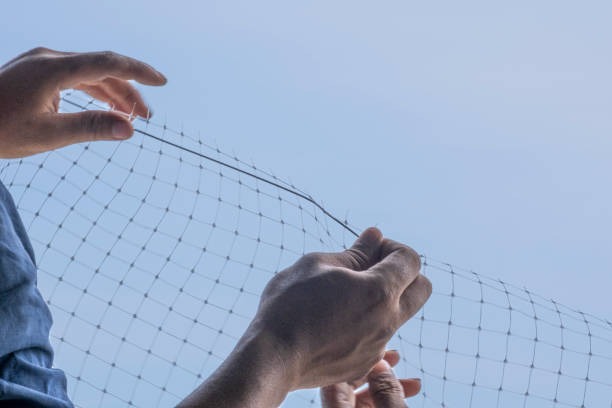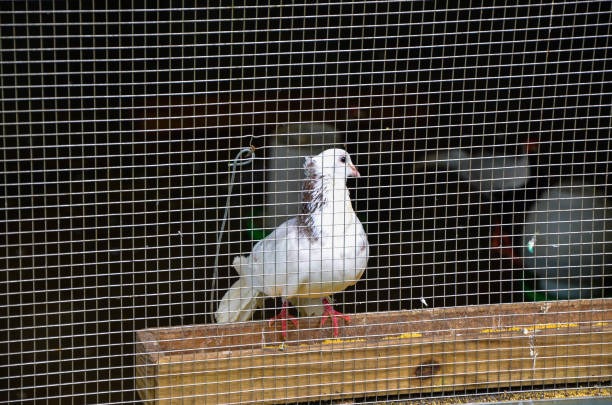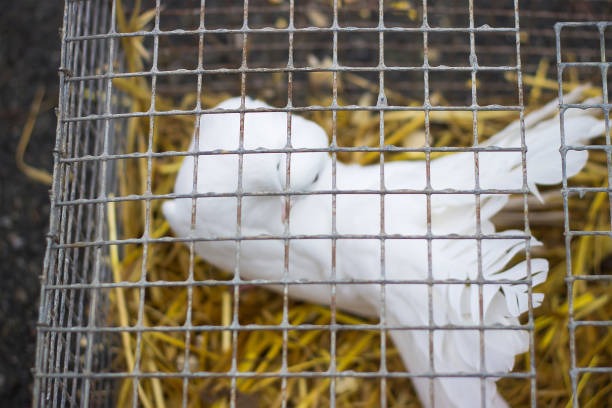Introduction
Pigeon net installation is the process of installing specially designed netting systems to prevent pigeon infestation and protect property and infrastructure. Pigeons, often considered pests, can cause various problems including property damage, health risks, and hygiene concerns. Pigeon netting provides an effective and humane solution to address these issues.
Understanding Pigeon Net Installation
Pigeon netting is typically made of durable and resistant materials such as polyethylene or polypropylene. The netting is constructed in a way that prevents pigeons from landing or nesting in unwanted areas. It features small gaps to deny access to birds while allowing air circulation and natural light.

The purpose of pigeon net installation is threefold. Firstly, it aims to prevent pigeon infestation by creating physical barriers that deter birds from accessing buildings, rooftops, or other areas. Secondly, it helps protect property and infrastructure from the damage caused by pigeons, including corrosive droppings, nesting materials, and debris. Lastly, pigeon net installation ensures hygiene and health standards by minimizing the risks of disease transmission and preventing contamination of food and water sources.
Benefits of Pigeon Net Installation
Pigeon net installation offers several benefits in managing pigeon-related issues.
A. Pigeon Infestation Prevention:
1. Avoiding Property Damage: Pigeons can cause significant damage to structures, rooftops, and equipment through their nesting activities, corrosive droppings, and debris accumulation. Pigeon netting acts as a physical barrier, protecting property from such damage.
2. Reducing Noise and Disturbance: Pigeons can create noise and disturbance, especially when nesting near residential or commercial areas. By preventing pigeons from accessing these spaces, pigeon net installation helps maintain a peaceful environment.
B. Protecting Property and Infrastructure:
1. Preservation of Aesthetic Appeal: Pigeon droppings and nests can deface the appearance of buildings and structures. Pigeon netting ensures the preservation of aesthetic appeal by keeping these areas clean and free from bird-related debris.
2. Safeguarding Structures from Corrosion and Damage: Pigeon droppings are highly corrosive and can damage various surfaces, including metal structures and machinery. Pigeon net installation prevents direct contact of droppings with these structures, reducing the risk of corrosion and subsequent damage.
C. Ensuring Hygiene and Health Standards:
1. Minimizing Disease Transmission: Pigeons are carriers of diseases, parasites, and allergens, posing health risks to humans. By limiting pigeon access to buildings and areas with pigeon netting, the spread of diseases and related health concerns can be significantly reduced.
2. Preventing Contamination of Food and Water Sources: Pigeon droppings can contaminate food preparation areas, water tanks, and other vulnerable locations. Pigeon net installation prevents pigeons from roosting or nesting near these areas, minimizing the risk of contamination.
Pigeon Net Installation Process
Pigeon net installation involves several key steps:
A. Inspection and Assessment:
1. Identifying Pigeon Problem Areas: A thorough inspection is conducted to determine areas prone to pigeon infestation, such as roosting spots, nesting areas, or access points.
2. Evaluating Netting Requirements: Based on the assessment, the required quantity, size, and structure of the pigeon netting are determined.
B. Design and Planning:
1. Customizing Netting Solutions: Pigeon netting is tailored to specific structures and areas, considering factors like architectural design, accessibility, and aesthetic requirements.
2. Considering Installation Challenges: The installation plan accounts for potential obstacles or complexities, such as access restrictions or unique architectural features.
C. Installation Procedure:
1. Fixing Netting Supports and Framework: A robust framework, including posts, brackets, and wires, is securely installed to support the pigeon netting.
2. Placing and Securing Pigeon Netting: The netting is carefully installed, ensuring proper tension and fixing to prevent birds from bypassing or damaging the barrier.
D. Maintenance and Upkeep:
1. Regular Inspections and Repairs: Periodic inspections are conducted to identify any damage or gaps in the netting system, and repairs or replacements are carried out promptly.
2. Cleaning and Sanitization: Regular cleaning of the netting and surrounding areas helps maintain hygiene standards and prevents the accumulation of debris.
Examples of Pigeon Net Installation Applications

Pigeon net installation finds utility in various settings, including:
A. Residential Buildings and Rooftops: Pigeon netting is often deployed in residential areas to protect rooftops, balconies, and open spaces from pigeon infestation.
B. Commercial and Industrial Establishments: Offices, warehouses, factories, and other commercial and industrial structures benefit from pigeon net installation to safeguard against property damage and maintain a clean working environment.
C. Public Spaces and Landmarks: Parks, monuments, bridges, and other public spaces utilize pigeon netting to preserve cleanliness, aesthetics, and the structural integrity of these landmarks.
Conclusion
Pigeon net installation is an effective solution for preventing pigeon infestation, protecting property and infrastructure, and maintaining hygiene and health standards. By acting as a physical barrier, pigeon netting ensures the preservation of property aesthetics, reduces property damage, and minimizes health risks associated with pigeons. Professional installation, along with regular maintenance, ensures optimal results and long-term effectiveness in managing pigeon-related issues.

